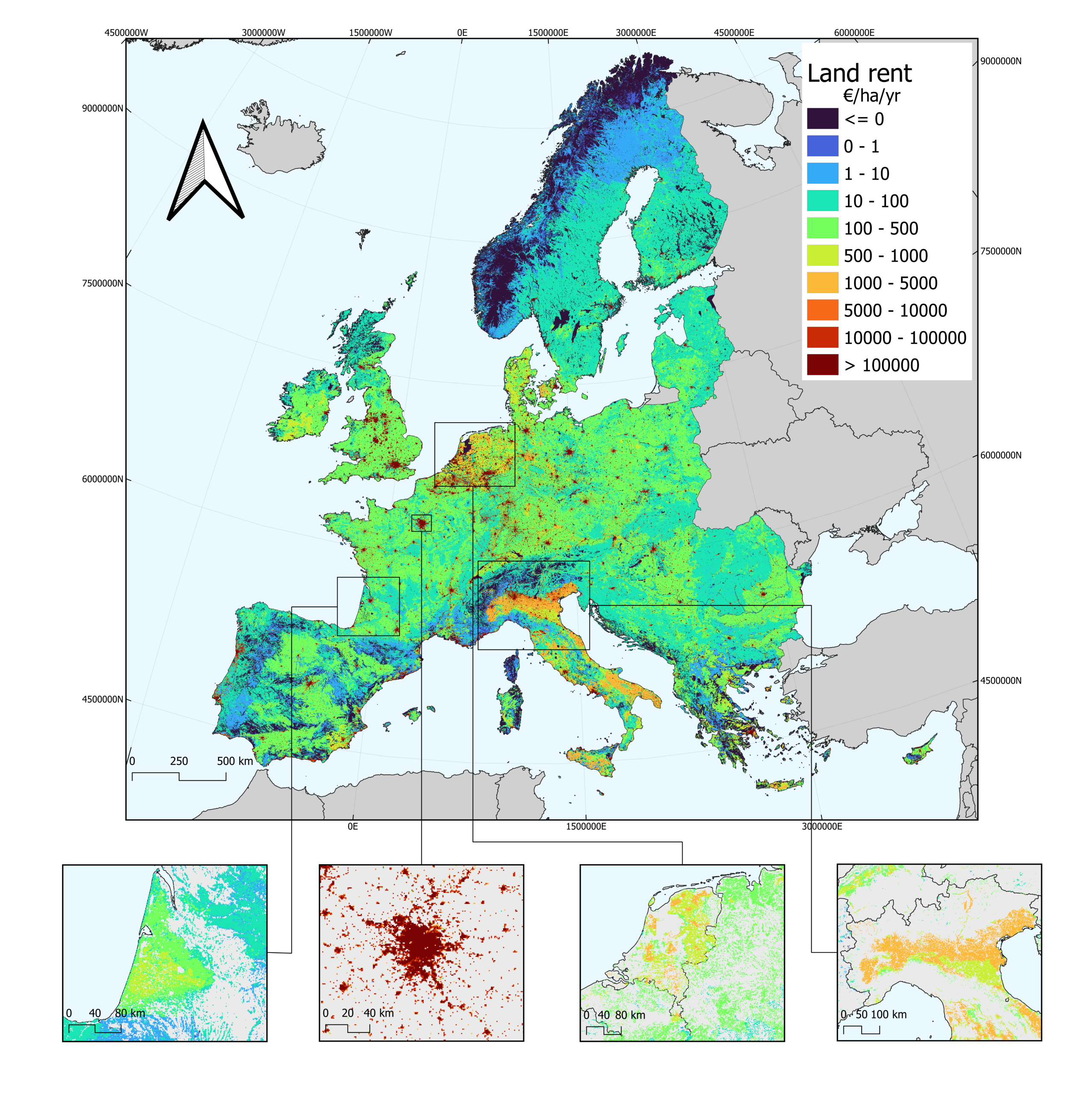New dataset: European Land Opportunity Costs of Conversation map (EULOCC1K)
In Europe, the development of a coherent protected area network is a key element of the EU Biodiversity Strategy for 2030, which aims to protect 30% of European land, with one third under strict protection. Spatial conservation prioritisation is widely used to identify areas where biodiversity can be conserved most effectively and cost-efficiently. These analyses often rely on opportunity costs—the foregone economic benefits of using land for conservation instead of alternative activities.
Because comprehensive, high-resolution, pan-European opportunity cost data have been lacking, we developed the European Land Opportunity Costs of Conservation map at 1 km resolution (EULOCC1K, expressed in €/ha/yr) for arable, pastoral, forestry, and urban lands. Opportunity costs for productive lands were estimated using (sub)national land and resource rent data, allocated at the grid level by integrating yield data and country-specific commodity prices. For urban land, we derived opportunity costs from area-standardised residential rents and population density, based on empirical data from 42 European urban areas.
Across land types, urban land shows the highest opportunity costs, followed by arable, pastoral, and forestry land. To account for cross-country differences, we also provide Purchasing Power Parity–adjusted and Z-score standardised versions of the dataset.
The EULOCC1K dataset can be combined with biodiversity and ecosystem service layers to identify priority sites for conservation e.g., aligned with the EU Biodiversity Strategy. It can help pinpoint areas where new protected areas would most effectively achieve conservation targets while minimising economic trade-offs.
Within the NaturaConnect project, this dataset will support multiple spatial conservation prioritisation analyses to design a cost-effective, Trans-European Nature Network that remains robust under future climate and socio-economic change

![]() Link to NaturaConnect project side
Link to NaturaConnect project side
Authors: Douglas Spencer, Alexandra Marques, Clara J. Veerkamp, Martijn van der Merel, Peter Verburg, Moreno Di Marco, Martin Jung, Heini Kujala, Louise O’Connor, Piero Visconti and Aafke M. Schipper




